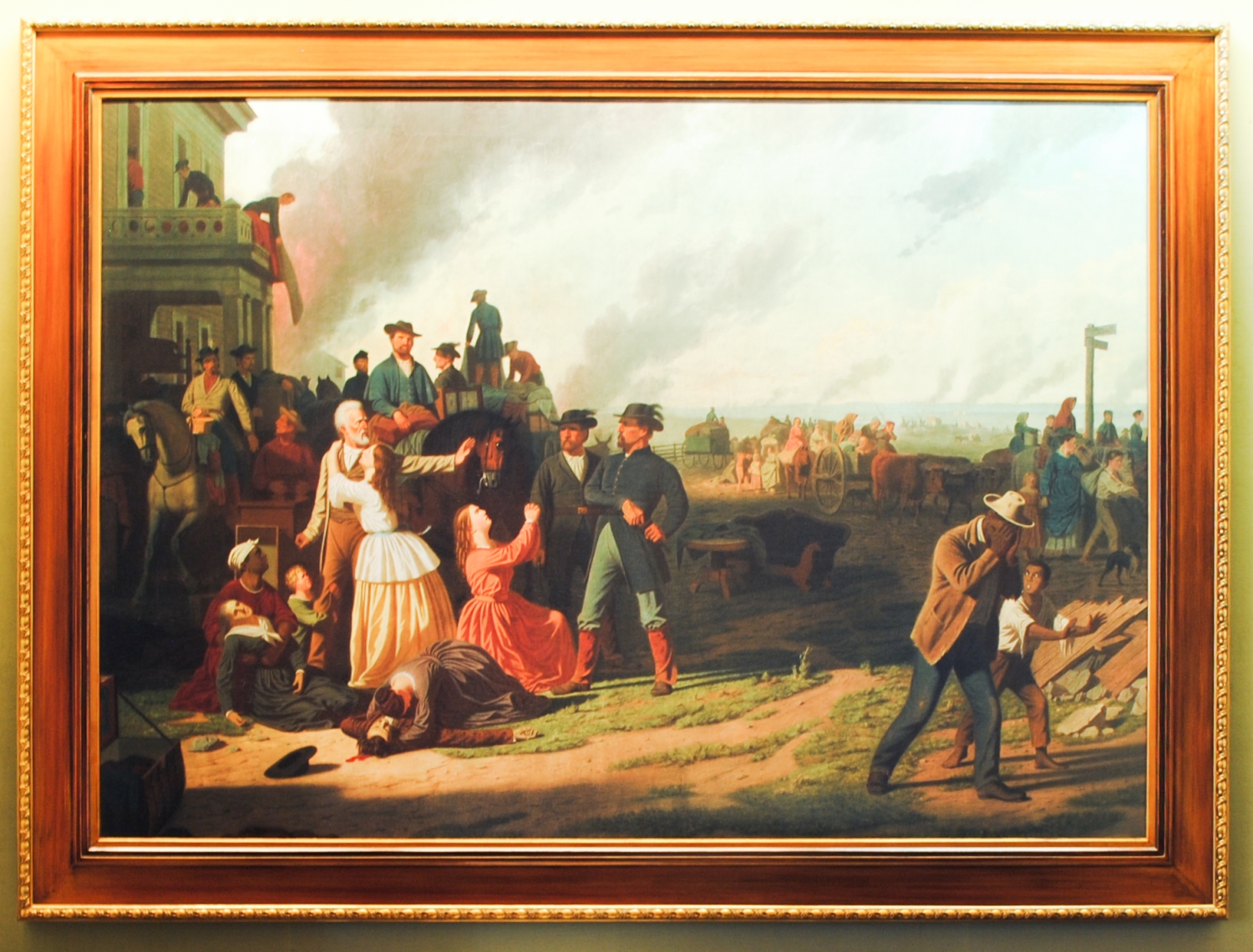All Library locations will be closed Monday, January 19 for Martin Luther King, Jr. Birthday.
Bingham's Order No. 11
"Order No. 11", originally painted by George Caleb Bingham, depicts a scene of turmoil taking place during the Civil War. Tensions regarding abolition were high between Kansans and Missourians in the Western Missouri counties. Union General Thomas Ewing Jr. proposed General Order No. 11 to placate the unrest. The order sought to end the fighting by vacating the affected counties completely. Bingham, although pro-Union, was appalled by the prospect and threatened General Ewing with the words "If you execute this order, I shall make you infamous with pen and brush." And this he did. In the painting, a caravan of wagons and rural families trail off into the plains, dotted by plumes of smoke billowing into the sky. Their farms had been burned and their families displaced. Bingham situates the culprit, General Ewing, amidst the chaos looking passive as conflict unfolds in the foreground. Two male figures, presumably pro- and anti-abolitionist representatives, stand off against one another while two women plead them to stop. Others kneel over wounded bodies on the ground, apparently shot by the figure in the black coat and red stockings. Bingham was in Kansas City when the order dropped in 1863, very near Jackson, Clay, Bates, and Vernon counties that suffered as a result. He succeeded in casting General Ewing in a negative light as he is the only calm character amidst the death and drama.

